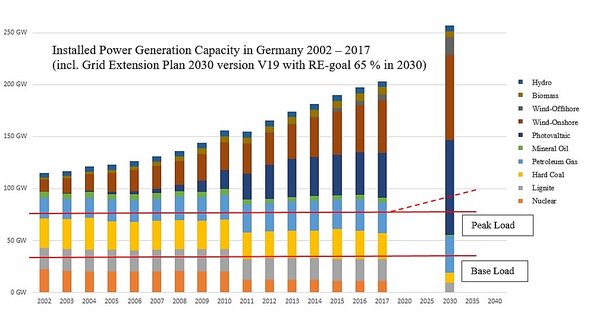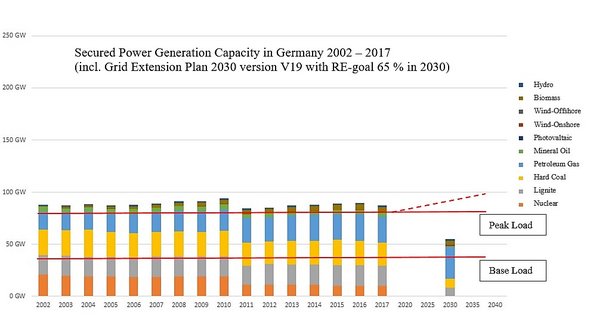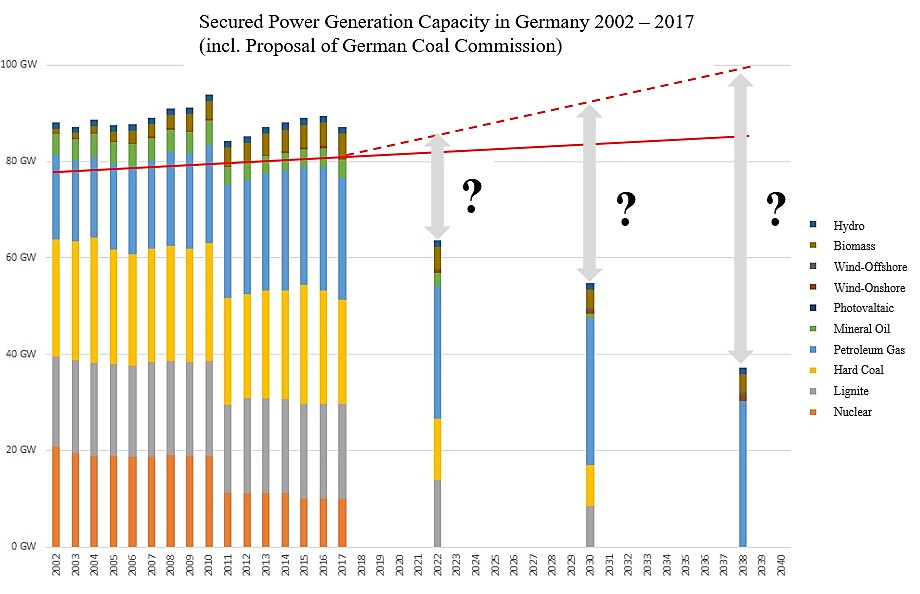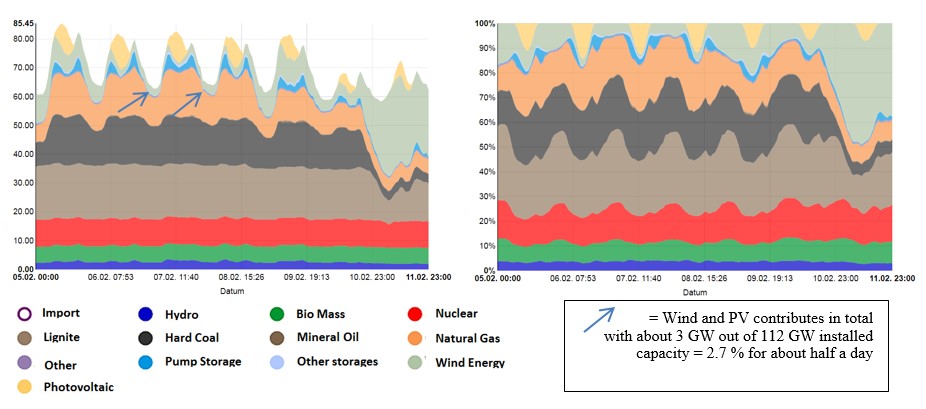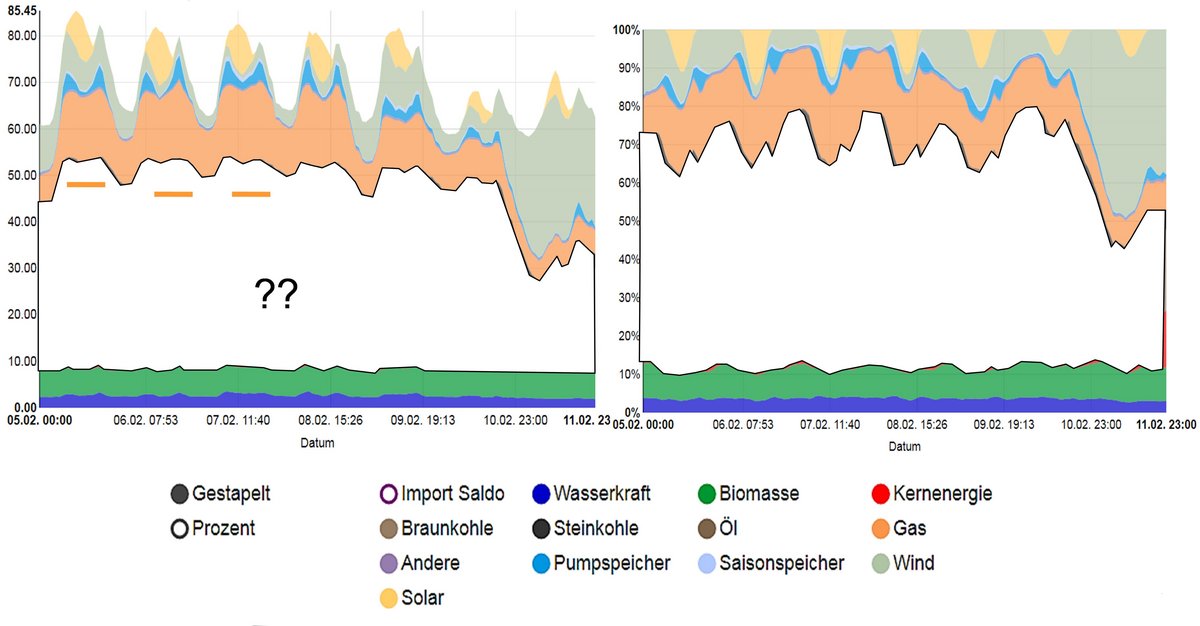Problems with the successful implementation of Renewable Energies in Germany
Due to the lag of storage capacity in electric power systems, the generation has to follow the load minute by minute at any time of the year. As long as you use generation units with primary energy storages in front (hydro, coal, gas, nucear), you will have a quite high secured power output of about 90% from these units at any time around the year. Unfortunately photovoltaic and wind energy as the main columns of the German energy transition will have a secured output of 0..2 %, simply based on their fluctuating meteorological behaviour. In the figures below it can be seen that the huge increase of installed power generation capacity caused by photovoltaic and wind energy will not lead to any increase of the secured generation capacity, which has to be still guaranteed by the conventional generation units.
| Nuclear | 93% | Running Water | 25% |
| Lignite | 92% | Biomass | 65% |
| Hard Coal | 86% | Wind off-shore | 2% |
| Gas (GuD) | 86% | Wind on-shore | 1% |
| Oil | 86% | PV | 0% |
| Gasturbine | 42% |
Ratio between installed and secured power of different types of generation.
In July 2020, German government decided to phase out the german coal fired power stations in 3 steps up to 2023, 2030 and 2038. In addition to that, the last German nuclear power station will be switched of in 2022.So there will be a permanent increasing gap between a heavily decreasing secured power generation capacity and an increasing peak load caused be more and more heat pumps and increasing e-mobility in Germany.
So a very challenging situation is forseeable to keep the power system stable in Germany as well as in Europe …… but the best place to research on such solutions and test them immediately in the real system.
As one example the figures below will show you the German generation portfolio in week 06/2018, where you can see, that the infeed from photovoltaic and wind energy was only 2-4 % of their installed capacity. You also can get a feeling on the lag of energy, when nuclear and coal fired units are disconnected in 2038 – insofar we have not enough good solutions developed and upscaled into to GW-range.

